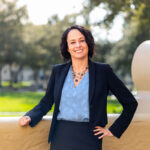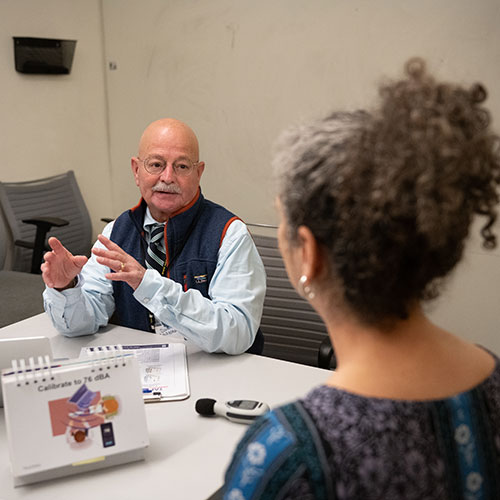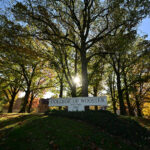
Don Goldberg develops much-needed Test of Auditory Functioning to assess children who are deaf or hard of hearing

Donald M. Goldberg, a professor at The College of Wooster in the communication sciences and disorders (CSD) program and a professional staff member at the Cleveland Clinic’s Head & Neck Institute’s Hearing Implant Program, recently published the Test of Auditory Functioning (TAF). The assessment tool is designed to help teachers and auditory professionals evaluate the current level of auditory functioning of children who are deaf or hard of hearing.
The clinician and professor has worked with deaf children for 40 years and taught about the development of listening skills and deaf children. The TAF “reflects my life’s work,” Goldberg said. “I know what’s needed for clinicians, researchers, and cochlear implant teams. It was a culmination of a lot of thought, clinical skills, and expertise that put me in a great position to do this,” he said.
The Test of Auditory Functioning includes 19 subtests, a 172-page tabletop easel with pictures that are whimsical and appealing to children, and a USB drive that has all the necessary audio files, downloadable score sheets, and an administrator’s manual. Geared for children from about 2 years old through 13, the criterion-based test measures performance against a fixed set of standards and is designed to be administered each year to mark progress against each child’s Individual auditory skills, not other children’s skills.
Goldberg modeled the TAF after the Test of Auditory Comprehension, a test from the 1970s that was out of print and no longer available after the copyright was removed. He started the research for the test during a 2015 sabbatical from Wooster. He traveled to Australia where there is a lot of work being done with cochlear implants. He had an honorary appointment at a school for the deaf that allowed him to analyze data and think about what to include in the test. In addition to Australia, Goldberg later conducted field testing in Israel, England, and the United States, primarily in Cleveland, Ohio; San Antonio, Texas; and Atlanta, Georgia.
The field testing provided insight into some differences in pronunciations and semantics. For example, “a picture of a skunk might not be recognized in Australia because there are no skunks there,” he said. His reference to train intersections would not be recognized in the United Kingdom because railroads rarely intersect with roads. He didn’t have to change many of the illustrations, but he realized, “The field testing was critical; you learn so much when you get out of your comfort zone of America,” he said.
The most progress on the project was made during Goldberg’s last research leave. He was able to finalize the test, record audio files at the Cleveland Clinic, and assemble the illustrations for the TAF. He hired sophomore research assistants who were studio art majors at the College of Wooster to provide initial sketches for the test. The illustrator used the drafts to complete more than 800 drawings, including the front cover that features an illustration of Goldberg’s family dog. Goldberg is also proud that the illustrations include Black, Indigenous, and other people of color. “Children need to see people that look like them in the graphics of illustrations of a test. I was especially sensitive to that,” he said.
From a clinician’s standpoint, Goldberg said the TAF helps document auditory development that can be used to create an Individualized Educational Plan for any child who is in a clinical environment to receive specialized instructions and related services. “As the test is used by more clinicians and educators, I will be able to further document that there is true clinical effectiveness in teaching deaf kids how to listen,“ he said.
The test has been well received by clinical colleagues and by other professionals. Audiologist Carol Flexer, a distinguished professor emeritus at the University of Akron, praised the TAF for listening and spoken language specialists, educational audiologists, speech-language pathologists, members of cochlear implant teams, and teachers of the deaf. “I highly recommend this test; it exemplifies a research-to-practice paradigm and is the culmination of Dr. Goldberg’s years of research into auditory functioning coupled with his vast clinical experience and experience,” she said. “The Test of Auditory Functioning does exactly what it is intended to do—identify the development of the child’s hearing brain.”
Goldberg recently completed a YouTube series about the TAF and eventually would like to create a tablet version of the test, because young children are used to playing on tablets. However, that project is not yet in the works because it requires knowledge outside of his expertise.
The College has been supportive of the work and research he’s pursued throughout his career at Wooster, and specifically for this project. “I never knew how incredible this institution would be both professionally, clinically, and personally. I’m blessed to have made my way into this profession and to this institution,” he said. “It’s a joyful experience working both with the College of Wooster students and very young children who are deaf. With the TAF, being able to quantify how well they do and to share with the clinical community a criterion test that I could administer each year to make sure that they keep growing is so very fun,” he said.
Featured image: Goldberg talked about his work on the Test of Auditory Functioning with fellow Wooster faculty and staff at the Celebration of Creators and Scholars on March 1.
Posted in Faculty, News on March 18, 2024.


